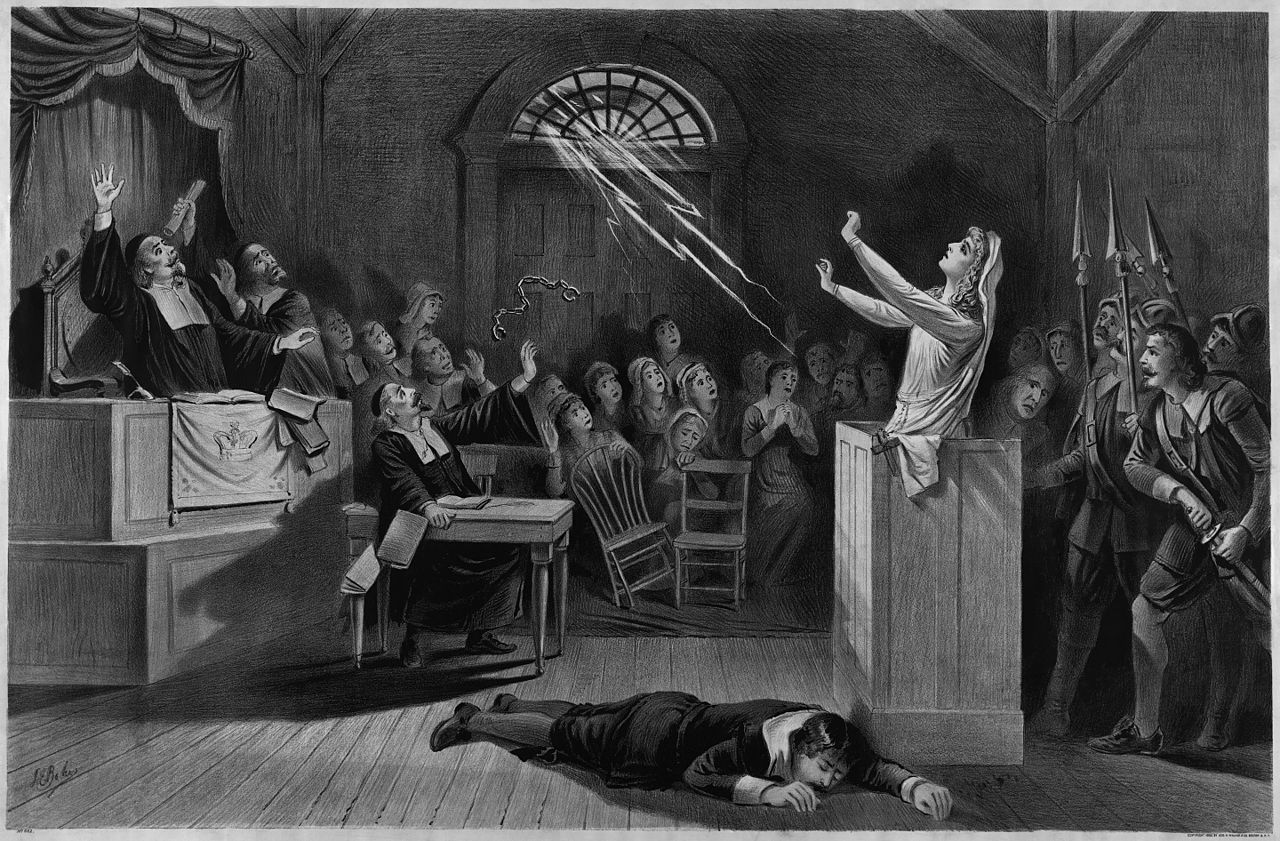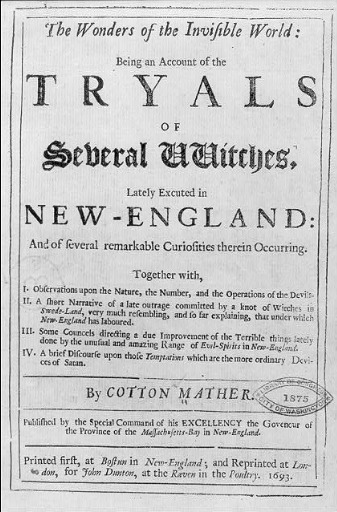Announcement of the Executions in Salem
This primary source, a print announcement about the horrors of witchcraft and devil worship surrounding the Salem and greater New England area, differ much from what we see as the real horror of that time- accusing innocent people of acts they did not commit, and giving them no true help in clearing their name. Written by none other than Cotton Mather, the devout Puritan minister who held a strong belief in the existence of witchcraft, this announcement aims to address the public and warn them about the conspiracies and dark, evil acts happening right under their noses. According to “The Spectrum: A Scholar’s Day Journal, Cotton Mather’s Involvement in the Salem Crisis” by Rebecca T. Smith of SUNY Brockport, Cotton Mather was the youngest student admitted to Harvard University, at eleven years old, and while he preached “about sin, evil, and witchcraft running rampant in New England,” (Smith 2) he did not create and continue the witch hunts. Most readers would view this print as a way to strike fear into the hearts of the deeply religious, early New Englanders, but Smith expands that the “main publications during the Salem Crisis were meant to inform New Englanders of the invisible world and to caution judges to carefully weigh all evidence—not to spur on the witch hunts” (Smith 3). The harsh diction that Mather inserts throughout the wordy data, such as “Operations of Devils,” “Evil Spirits in New England,” and “Temptations which are the more ordinary Devices of Satan” may seem like they are there to sway the audience, and in part they were, but they were also just a way of concisely broadcasting what Mather himself was observing in society. Instead of causing a panic at the eventual executions of the women, Mather kept the community in the know with the current events. Mather was aiming to keep the colonists under the Governor of the Province of the Massachusetts Bay in New England informed, and although this print would be absurd and inappropraite for us to produce today, it was appropriate and a quite a normal occurance in the state of New England in the late 1600’s.

